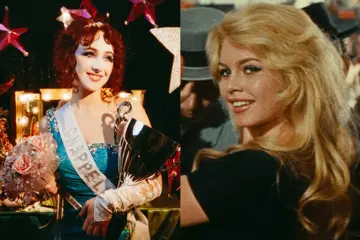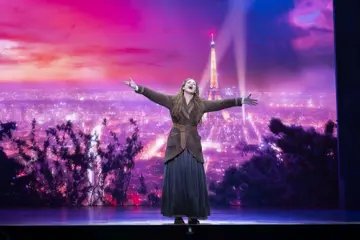"It was a very controversial novel for Peter… But some people who read the book and found it confronting said they saw the show and kind of went on the journey of the characters because of the nature of theatre,” says Bower. “When I read something obviously I have to imagine everything. We're relying entirely on the works so to a certain extent, I suspect that could be why for some people the book is kind of too much.” Wish is the story of JJ, a hearing man born to deaf parents raised as a native speaker of Australian Sign Language (Auslan). He returns to his hometown divorced and defeated but agrees to teach Auslan to a mysterious creature named Eliza. Despite resting on morally ambiguous territory, Wish is not a sensationalist piece of theatre.
“I love it when the audience gets a surprise when they discover what she actually is and indeed how the relationship between them develops but I definitely want to keep the details quiet,” says Bower. “I don't want people coming to see it as a sensationalist piece… It starts off being a book about sign language and the deaf as a story, then it becomes a story about animal rights but those issues are kind of ladders to something bigger.”
The literary community is divided in their opinion of Wish with some shunning it as distasteful and others praising its conceptual complexity. Wish could be considered many things – a love story or a political text on the rights of the deaf and of animals, the evils of science or the divisive nature of intelligence – but Bower believes the story is more. “It deals with all those issues, but not in a one-sided way because the deaf characters and even the animal rights activists are complex – their motivations are complex and they're not altogether pure … I think it raises lots of questions for me about what it means to be a person, what it means to be human, what the differences are, whether the differences between us and the rest of nature are as clear cut as we think.”
The book on which the play is based uses diagrams of Auslan throughout to aid in telling the story. The visual appeal of these diagrams proved a drawcard for Bower who saw it as a great starting point for theatre. With over 6,500 native speakers, Auslan is a powerful yet underutilised tool in performance art. “There's a concept that they call 'signing space' which is the space between two people who are communicating in Auslan and I love that idea, to me that's kind of the essence of theatre. What I love about it as a language, and I'm only dipping my toes into it so to speak, is the fact that it's physical. It involves the whole body. Particularly the hands but also the face so it's a very emotional and expressive language as well and that's part of what makes it so exciting for theatre.”
Don't miss a beat with our FREE daily newsletter















